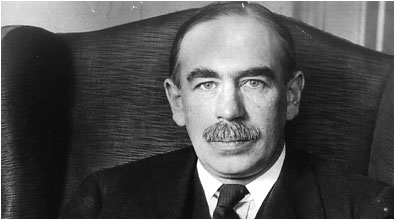
“When the facts change, I change my mind. What do you do, sir?” – Attributed to John Maynard Keynes.
The Controller General of Accounts releases fiscal deficit numbers towards the end of every month. The latest set of numbers released late last week show that the fiscal deficit for the first nine months of the financial year between April to December 2014 was at 100.2% of its annual target.
The fiscal deficit target for the current financial year is Rs 5,31,177 crore. The government ran a fiscal deficit of Rs 5,32,381 crore or 100.2% of the targeted fiscal deficit during the first nine months of the financial year. Fiscal deficit is the difference between what a government earns and what it spends.
In my columns so far I have remained sceptical on the ability of the government to meet its fiscal deficit target, given that the growth in its tax collections has been way off the mark than what it had assumed when it had presented the budget. But this might change in the days to come.
The reason for this is very simple—the fiscal deficit target that needs to be achieved is always expressed as a certain proportion of the gross domestic product(GDP) of the country. The GDP is a measure of all the goods and services produced in a country. It essentially tells how big the economy of a country is.
The GDP can be measured in multiple ways. As Diane Coyle writes in GDP—A Brief But Affectionate History: “You can add up all the output of the economy, all the expenditure in the economy, or all the incomes.” Theoretically these numbers should match. But they never do given the discrepancies that creep in at the time of collection of data. In this column we will discuss things from the point of view of output of the various sectors in the economy.
The finance minister Arun Jaitley had set an absolute fiscal deficit target of Rs 5,31,177 crore when he presented the budget in July 2014. This was essentially 4.1% of the projected GDP of Rs 12,876,653 crore in 2014-2015.
If the projected GDP goes up, the fiscal deficit as a proportion of the GDP automatically starts to come down. Essentially this is what will happen.
Last week, the ministry of statistics and programme implementation released a new methodology to measure GDP. It changed the base year for measuring GDP from 2004-2005 to 2011-2012. The structure of the economy keeps changing. Hence, the GDP calculations also need to keep pace with this change. Over and above that the data that the government has access to keeps improving over the years, and this also needs to be incorporated in the way the GDP is calculated.
As Crisil Research points out in a research note released on February 2, 2015: “This base revision incorporates the changing structure of the economy, especially rural India. The revised series for GDP…in addition to change in some estimation methods, now also incorporate information from new datasets, in particular, Census 2011, annual account of companies as filed with Ministry of Corporate Affairs (MCA), NSS Unincorporated Enterprise Survey (2010-11), NSS Employment-Unemployment Survey (2011-12), Agriculture Census (2010-11) and Livestock Census (2012), NSS All India Debt and Investment Survey (2013) and NSS Consumer Expenditure Survey (2011-12).”
This new GDP data essentially suggests that the Indian economy grew by 4.9% during 2012-13, and 6.6% during 2013-14. The earlier calculations had suggested that the Indian economy grew by 4.5% in 2012-2013 and 4.7% in 2013-2014.
While, there is not much difference in GDP growth in 2012-2013, between the new method and the old method, the difference in GDP growth in 2013-2014 is significant. One possible explanation for this lies in the fact that as per the new method of measuring GDP, the manufacturing sector grew by 5.3% in 2013-2014, whereas it had contracted by 0.7% as per the earlier method. A similar sort of dynamic seems to have played out with mining and quarrying sector as well. As per the old method the sector contracted by 1.4% in 2013-2014, whereas as per the new method the sector actually grew by 5.4%.
Also, trade, hotels, transport and communication grew by 3% as per the old method of measuring GDP. In the new method trade, repair, hotels and restaurants grew by 13.3%. Further, transport, storage, communication & services related to broadcasting grew by 7.3%.
The comparison does give us a drift of why the GDP growth was higher in 2013-2014 as per the new method. Nevertheless there are doubts being raised about this jump in growth from 4.7% to 6.6% in 2013-2014. The Chief Economic Adviser to the ministry of finance Arvind Subramanian told Business Standard in an interview that: “India is perhaps unique in that GDP revisions result in lower numbers rather than the typically high upward revisions…The key 2011-12 estimate of GDP is actually two per cent lower than previously estimated.” Given that, the 2011-2012 GDP is down by 2%, the growth in the latter years has been faster.
Further, it needs to be remebered that 2013-2014 was a crisis year for the Indian economy where external capital flowed out of India and interest rates had to be jacked up. Imports also fell. As Subramanian put it: “Import of goods apparently declined 10 per cent; this, even after accounting for the squeeze on gold imports, is high. Typically, growth booms are accompanied by surges in import, not declines.” At the same time inflation was very high slowding down consumption. So, the other data goes against this upward revision in the GDP number for 2013-2014.
Further, what does this change mean for the current financial year’s fiscal deficit? The GDP numbers for 2014-2015 calculated as per the new method will be released on February 9, 2015. Subramanian feels that there won’t be much of a difference if the projected GDP growth as per the new method remains the same as is being currently expected. While we will have to wait for the actual numbers to come out, nevertheless if the GDP growth turns out to be faster than the 5.5% growth that had been calculated as per the old method, the denominator in the fiscal deficit to GDP ratio will actually go up and thus push down the ratio.
This will be good news for the government which is struggling to meet its fiscal deficit target. In fact, this change in methodology may also give the government a little more leaway to arrive at the fiscal deficit number for the next financial year, allowing it to spend more. The question though is whether the financial market will start believing in India’s new GDP numbers? That remains to be seen.
(The column originally appeared on www.equitymaster.com as a part of The Daily Reckoning on February 3, 2015)



